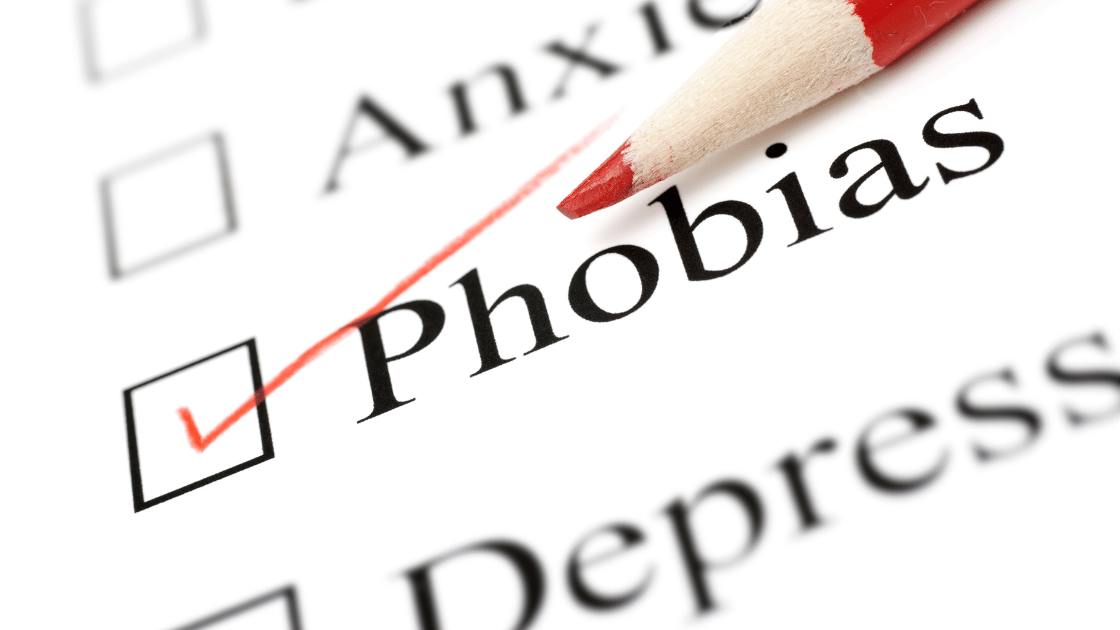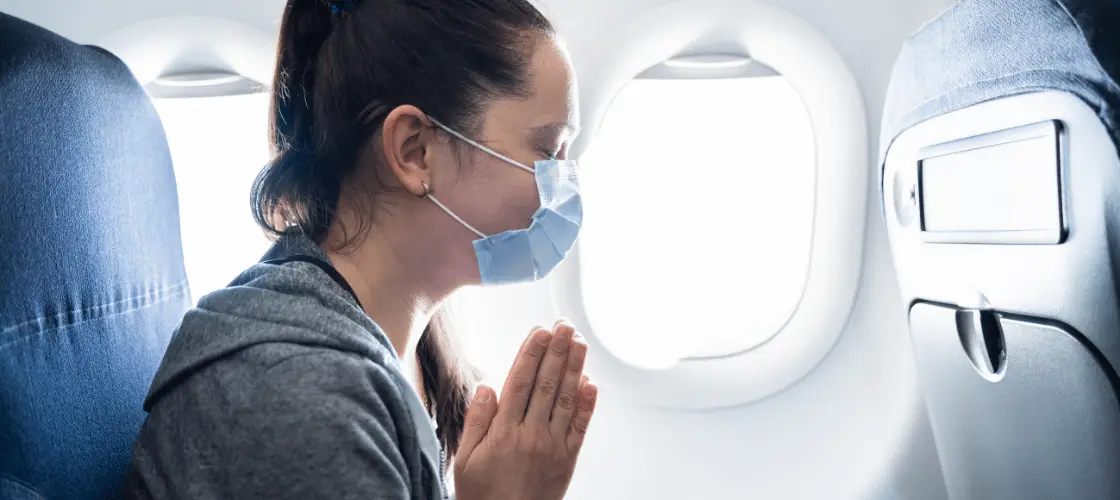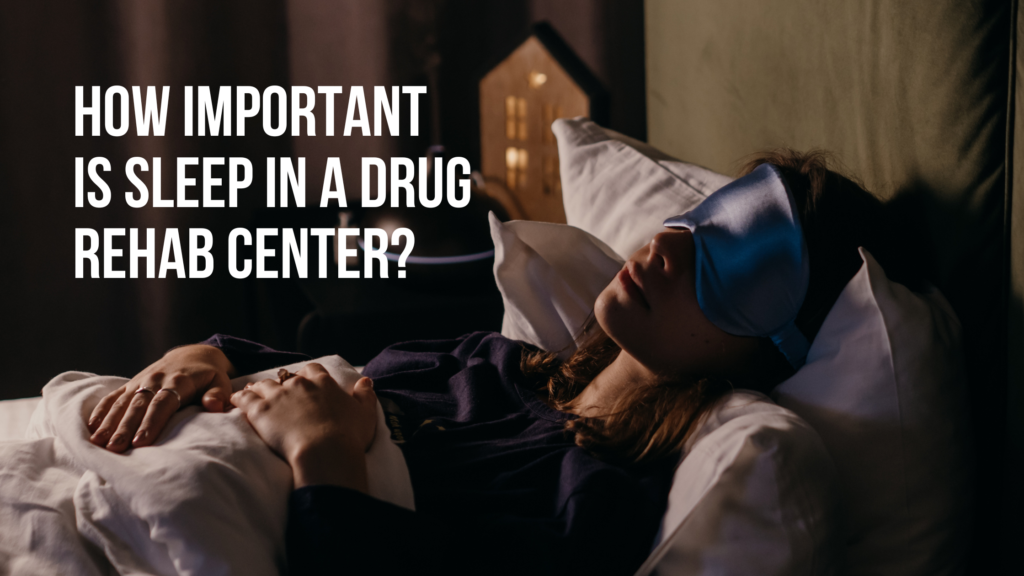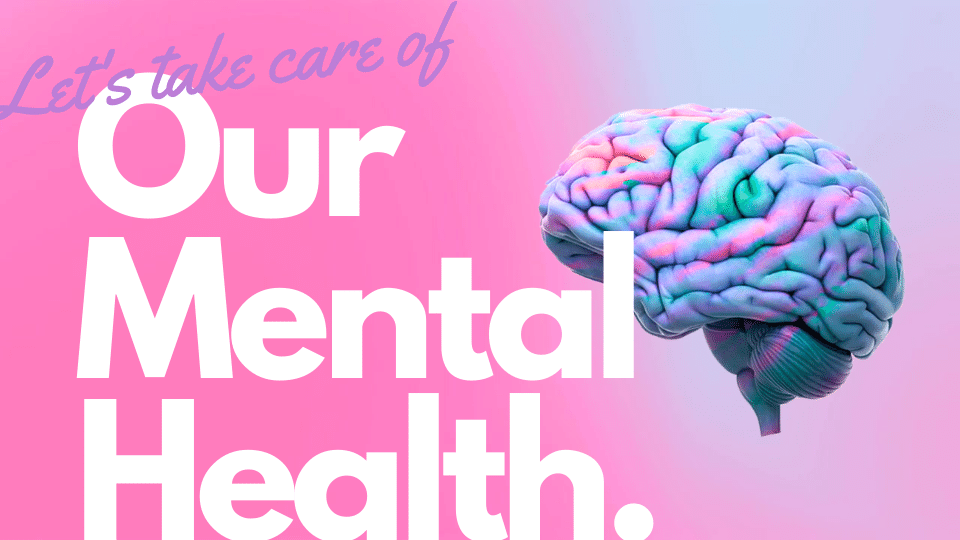2024 Updated List of Phobias: A to Z Common Phobias

Introduction
Phobias are intense and irrational fears of objects, places, situations, or animals, which can significantly impact individuals’ daily lives. These fears trigger anxiety disorders with excessive fear and immediate anxiety responses upon exposure to the fear source.
Key Takeaway
By delving into the extensive list of phobias, you can gain insights into the diverse types of phobias that exist and their potential impact on individuals’ well-being.
Categories of Phobias
Phobias can be classified into different categories based on the fear trigger:
- Specific phobias (e.g., fear of spiders)
- Social phobia (fear of being judged by others in social situations)
- Agoraphobia (fear of being in places where escape might be difficult)
These categories provide a framework for understanding the wide range of phobic experiences that individuals may encounter.

The Ultimate List of Phobias from A to Z
Understanding Phobia Names
Phobias are named using a combination of Greek prefixes and the suffix “-phobia”, which denotes an irrational fear. These names are constructed to represent specific objects, situations, or concepts that individuals may fear. Understanding the meaning behind phobia names can provide insight into the nature of these irrational fears.
Greek prefixes such as “acro-” for heights and “aero-” for air are commonly used to form phobia names. For example, “acrophobia” refers to the fear of heights, while “aerophobia” denotes the fear of flying. By combining these prefixes with the suffix “-phobia”, a diverse range of phobia names can be created, each representing a unique fear experienced by individuals.
These naming conventions allow for a comprehensive categorization of phobias based on their underlying triggers. From common fears like arachnophobia (fear of spiders) to more obscure ones like nomophobia (fear of being without a mobile phone), the ultimate list of phobias encompasses a wide spectrum of human anxieties.
Exploring this extensive catalog of phobia names can shed light on the diverse array of fears that people experience, providing valuable insights into the human psyche and the complexities of irrational anxieties.
Exploring the Ultimate List of Phobias
Before we dive into the extensive list, let’s discuss the naming convention for phobias, which can help us decipher their meanings. Phobias are named using Greek prefixes combined with the suffix ‘-phobia’. This naming system provides insight into the object or situation that triggers the fear.
Now, let’s explore a comprehensive list of phobias from A to Z, highlighting intriguing examples from each section of the alphabet.
A
| Phobia | Description |
|---|---|
| Achluophobia | Fear of darkness |
| Acousticophobia | Fear of noise |
| Acrophobia | Fear of heights |
| Aerophobia | Fear of flying |
| Agoraphobia | Fear of open places |
| Ailurophobia | Fear/dislike of cats |
| Algophobia | Fear of pain |
| Anatidaephobia | Fear/dislike of ducks |
| Ancraophobia | Fear of wind or drafts |
| Androphobia | Fear of adult men |
| Anthropophobia | Fear of human beings |
| Apiphobia | Fear of bees |
| Aquaphobia | Fear of water |
| Arachnophobia | Fear of spiders |
| Astraphobia | Fear of thunder and lightning |
| Atelophobia | Fear of imperfection |
| Atychiphobia | Fear of failure |
| Autophobia | Fear of isolation |
B
| Phobia | Description |
|---|---|
| Bacteriophobia | Fear of bacteria |
| Basophobia | Fear of falling |
| Batrachophobia | Fear/dislike of frogs |
| Bibliophobia | Fear of books |
| Blood-injection-injury type phobia | Fear of blood, injections, or injury |
| Belonephobia | Fear of needles or pins |
C
| Phobia | Description |
|---|---|
| Cacophobia | Fear of ugliness |
| Carcinophobia | Fear of cancer |
| Catoptrophobia | Fear of mirrors |
| Chemophobia | Fear of chemicals |
| Claustrophobia | Fear of enclosed spaces |
| Coprophobia | Fear of feces |
| Coulrophobia | Fear of clowns |
| Cyberphobia | Fear of computers |
| Cynophobia | Fear/dislike of dogs |
D
| Phobia | Description |
|---|---|
| Dendrophobia | Fear of trees |
| Dental fear | Fear of dental procedures |
| Odontophobia | Fear of teeth |
| Dentophobia | Fear of dentists |
| Domatophobia | Fear of houses |
| Driving phobia | Fear of driving |
| Driving anxiety | Anxiety related to driving |
| Dysmorphophobia | Fear of body defects |
E
| Phobia | Description |
|---|---|
| Ecophobia | Fear of environmental change |
| Eisoptrophobia | Fear of mirrors |
| Emetophobia | Fear of vomiting |
| Enochlophobia | Fear of crowds |
| Entomophobia | Fear/dislike of insects |
| Equinophobia | Fear/dislike of horses |
| Ergophobia | Fear of work |
| Erotophobia | Fear of sexual love |
F
| Phobia | Description |
|---|---|
| Frigophobia | Fear of becoming too cold |
G
| Phobia | Description |
|---|---|
| Gamophobia | Fear of marriage |
| Gelotophobia | Fear of being laughed at |
| Gephyrophobia | Fear of bridges |
| Genophobia | Fear of sexual intercourse |
| Gerascophobia | Fear of aging |
| Gerontophobia | Fear of growing old |
| Globophobia | Fear of balloons |
| Glossophobia | Fear of public speaking |
| Gymnophobia | Fear of nudity |
| Gynophobia | Fear of adult women |
H
| Phobia | Description |
|---|---|
| Halitophobia | Fear of bad breath |
| Haphephobia | Fear of being touched |
| Helminthophobia | Fear of worms |
| Hemophobia | Fear of blood |
| Herpetophobia | Fear/dislike of reptiles |
| Hippophobia | Fear/dislike of horses |
| Hodophobia | Fear of travel |
| Hypnophobia | Fear of sleep |
| Hypochondria | Fear of illness |
I
| Phobia | Description |
|---|---|
| Ichthyophobia | Fear of fish |
| Insectophobia | Fear of insects |
K
| Phobia | Description |
|---|---|
| Koumpounophobia | Fear of buttons |
L
| Phobia | Description |
|---|---|
| Lilapsophobia | Fear of tornadoes or hurricanes |
| Lepidopterophobia | Fear of butterflies and moths |
M
| Phobia | Description |
|---|---|
| Mageiricophobia | Fear of cooking |
| Masklophobia | Fear of people in masks |
| Megalophobia | Fear of large objects |
| Melanophobia | Fear of the color black |
| Monophobia | Fear of being alone |
| Musophobia | Fear/dislike of mice or rats |
| Mycophobia | Fear of mushrooms |
| Myrmecophobia | Fear of ants |
| Mysophobia | Fear of germs |
N
| Phobia | Description |
|---|---|
| Necrophobia | Fear of death |
| Noctiphobia | Fear of the night |
| Nomophobia | Fear of being without a mobile phone |
| Nosocomephobia | Fear of hospitals |
| Nosophobia | Fear of contracting a disease |
| Nostophobia | Fear of returning home |
| Nyctophobia | Fear of darkness |
O
| Phobia | Description |
|---|---|
| Obesophobia | Fear of gaining weight |
| Oikophobia | Fear of home surroundings |
| Odontophobia | Fear of teeth |
| Ommetaphobia | Fear of eyes |
| Oneirophobia | Fear of dreams |
| Ophidiophobia | Fear/dislike of snakes |
| Ophthalmophobia | Fear of being stared at |
| Ornithophobia | Fear/dislike of birds |
| Osmophobia | Fear of odors |
| Ostraconophobia | Fear/dislike of shellfish |
P
| Phobia | Description |
|---|---|
| Panphobia | Fear of everything |
| Pedophobia | Fear/dislike of babies or children |
| Phagophobia | Fear of swallowing |
| Phallophobia | Fear of erections or penises |
| Pharmacophobia | Fear of medications |
| Phasmophobia | Fear of ghosts |
| Philophobia | Fear of love |
| Pogonophobia | Fear of beards |
| Pornophobia | Fear/dislike of pornography |
| Porphyrophobia | Fear of the color purple |
| Pteromerhanophobia | Fear of flying |
| Pyrophobia | Fear of fire |
R
| Phobia | Description |
|---|---|
| Radiophobia | Fear of radioactivity |
| Ranidaphobia | Fear/dislike of frogs |
S
| Phobia | Description |
|---|---|
| Scopophobia | Fear of being looked at |
| Sexophobia | Fear of sexual organs |
| Siderodromophobia | Fear of trains |
| Social phobia | Fear of social situations |
| Somniphobia | Fear of sleep |
| Spectrophobia | Fear of mirrors |
| Stasiphobia | Fear of standing or walking |
| Submechanophobia | Fear of submerged man-made objects |
T
| Phobia | Description |
|---|---|
| Taphophobia | Fear of graves |
| Technophobia | Fear of technology |
| Telephone phobia | Fear of phone calls |
| Teratophobia | Fear of giving birth to a monster |
| Tetraphobia | Fear of the number 4 |
| Thalassophobia | Fear of the sea |
| Thanatophobia | Fear of dying |
| Tokophobia | Fear of childbirth |
| Tomophobia | Fear of medical procedures |
| Tonitrophobia | Fear of thunder |
| Toxiphobia | Fear of being poisoned |
| Trichophobia | Fear of hair loss |
| Triskaidekaphobia | Fear of the number 13 |
| Trypanophobia | Fear of needles |
V
| Phobia | Description |
|---|---|
| Vehophobia | Fear of driving |
| Verminophobia | Fear of germs |
W
| Phobia | Description |
|---|---|
| Workplace phobia | Fear of the workplace |
X
| Phobia | Description |
|---|---|
| Xanthophobia | Fear of the color yellow |
Z
| Phobia | Description |
|---|---|
| Zoophobia | Fear of animals |
Cultural Prejudices and Discrimination
- Various phobias denoting prejudices and discrimination towards specific groups.
Ethnic Prejudices and Discrimination
- Various phobias denoting prejudices and discrimination towards specific ethnicities or nationalities.
Medical Conditions
- Various phobias associated with specific medical conditions or cultural phenomena.
Phobia in the Natural Sciences
- Various phobias describing predispositions in the natural sciences.
Please note that this list is extensive and covers various phobias, cultural biases, and medical conditions associated with fear or aversion towards specific objects, situations, or groups.
Source – Wikipedia
This list provides just a glimpse into the vast array of phobias that exist. With over 550 documented phobias, there are many more intriguing and unique fears out there. While some may seem unusual or irrational to us, it’s important to remember that these fears can be very real and distressing for those who experience them.
Common and Uncommon Phobias: A Closer Look
1. Common Phobias
Common phobias are fears that are widely experienced by a significant portion of the population. These fears often revolve around specific objects, situations, or creatures and can elicit intense anxiety and panic responses. Here are some examples of common phobias:
- Acrophobia: Fear of heights. People with acrophobia may experience extreme discomfort or fear when they are in high places, such as tall buildings or bridges.
- Aerophobia: Fear of flying. This phobia can cause individuals to avoid air travel altogether due to intense anxiety and fear associated with flying.
- Arachnophobia: Fear of spiders. Arachnophobia is one of the most prevalent phobias, affecting many individuals who feel extreme fear and avoidance towards spiders.
The prevalence of these common phobias can be attributed to a variety of factors. One possible reason is evolutionary psychology, which suggests that certain fears, like the fear of heights or spiders, may have been advantageous for our ancestors’ survival. Another factor is the influence of cultural conditioning and personal experiences, as individuals may develop these fears based on negative encounters or learned associations.
2. Uncommon and Rare Phobias
While common phobias garner more attention, there are numerous uncommon and rare phobias that deserve recognition as well. These phobias may be less prevalent in the general population but still significantly impact the lives of those who experience them. Here are a few examples:
- Ophidiophobia: Fear of snakes. Although snakes pose little threat in many urban environments, ophidiophobia can cause severe distress and avoidance behaviors in individuals who suffer from this fear.
- Ornithophobia: Fear of birds. While birds are a common sight in nature, individuals with ornithophobia may experience intense anxiety and fear when in close proximity to these creatures.
- Trypophobia: Fear of clusters of small holes or bumps. This phobia is characterized by an aversion to objects with patterns of small holes, such as honeycombs or lotus seed pods. The exact cause of trypophobia is still unclear, but it can be a source of significant discomfort for those affected.
These uncommon and rare phobias often present unique challenges for individuals who experience them. The fear triggers may be less common in daily life, making it harder to avoid exposure and manage the associated anxiety. Moreover, the lack of understanding and awareness surrounding these phobias can lead to feelings of isolation and frustration for those affected.
By shedding light on both common and uncommon phobias, we can broaden our understanding of the wide spectrum of fears that people experience. It is important to remember that every person’s fears are valid, regardless of their prevalence. If you or someone you know struggles with a phobia, seeking professional help and support can make a significant difference in managing and overcoming these fears.
2. Uncommon and Rare Phobias
While we covered some common phobias briefly earlier, let’s now explore uncommon and rare phobias in more detail to understand their specific characteristics and the unique challenges they present for those who experience them.
Examples of Uncommon and Rare Phobias
Here are a few examples of uncommon and rare phobias:
- Ophidiophobia: This is the fear of snakes and is considered one of the most common specific phobias. However, it can still be classified as an uncommon phobia due to its prevalence compared to more widely known fears like acrophobia or arachnophobia. People with ophidiophobia may experience intense anxiety when exposed to snakes or even at the thought of encountering one. The fear can be so severe that it impacts their daily life and restricts them from visiting certain places or participating in outdoor activities.
- Ornithophobia: This phobia refers to a fear of birds. While birds are often associated with freedom and beauty, individuals with ornithophobia experience overwhelming fear and anxiety when in close proximity to these creatures. The fear may stem from past traumatic experiences, such as being attacked by a bird, or it could arise without any identifiable cause. Those with ornithophobia may avoid parks, gardens, or any place where they might encounter birds.
- Pogonophobia: Pogonophobia is the irrational fear of beards. While this phobia may appear unusual to some, it can significantly impact those who have it. People with pogonophobia may feel extreme discomfort or anxiety when faced with individuals sporting facial hair, including stubble or fully grown beards. This fear can limit social interactions and affect personal relationships, especially in cultures where beards are commonly seen.
- Trypophobia: This phobia involves an aversion or fear of clusters of small holes or bumps. While not officially recognized as a mental disorder in the Diagnostic and Statistical Manual of Mental Disorders (DSM-5), trypophobia is still a common fear experienced by many individuals. Seeing clusters of holes, such as those found in lotus seed pods or beehives, can trigger intense discomfort, anxiety, or even panic attacks in people with trypophobia.
- Nomophobia: Nomophobia refers to the fear of being without a mobile phone or being unable to use it. In today’s digital age, where smartphones have become an integral part of our lives, nomophobia is becoming increasingly prevalent. People with this phobia may experience extreme anxiety or distress when separated from their phones. The fear of missing out (FOMO) and the dependence on constant connectivity contribute to the development and maintenance of nomophobia.
The Impact of Uncommon and Rare Phobias
These examples highlight the wide range of fears that individuals may experience. It’s important to remember that each person’s phobia is unique, and the impact it has on their daily life can vary significantly.
Understanding these uncommon phobias allows us to develop empathy towards those who struggle with them and encourages us to create a more inclusive and supportive environment for everyone.
Causes, Symptoms, and Treatment of Phobias
Understanding the causes, symptoms, and treatment options for phobias is essential in order to effectively manage and overcome these irrational fears. In this section, we will explore the various factors that contribute to the development of phobias, common symptoms experienced by individuals with phobias, and the available treatment options.
Causes of Phobias
Phobias can be influenced by a combination of genetic predisposition and past traumatic experiences. Research has shown that individuals with a family history of phobias are more likely to develop phobias themselves, suggesting a genetic component to their development. Additionally, traumatic experiences or witnessing someone else experience trauma related to a specific object or situation can also trigger the onset of a phobia.
Symptoms of Phobias
When faced with their phobic object or situation, individuals with phobias experience intense fear and anxiety. These emotional responses are often accompanied by physical symptoms such as:
- Chest tightness
- Rapid heartbeat
- Shortness of breath
- Sweating
- Trembling
- Nausea
- Dizziness
- Panic attacks
These symptoms can be overwhelming and may lead individuals to avoid situations or places associated with their phobia, which can significantly impact their daily lives and limit their activities.
Seeking Help: Treatment Options for Phobias
Fortunately, there are effective treatment options available for individuals struggling with phobias. It’s important to seek professional help to address these fears and regain control over one’s life. Here are some commonly used treatments for phobias:
- Exposure Therapy: This form of therapy involves gradually exposing individuals to their fears in a controlled environment. By gradually increasing exposure levels over time, individuals learn to manage their anxiety and develop coping mechanisms to overcome their phobia.
- Cognitive-Behavioral Therapy (CBT): CBT focuses on identifying and changing negative thought patterns and behaviors associated with the phobia. Through this therapy, individuals learn to challenge their irrational beliefs and replace them with more realistic and positive thoughts.
- Medications: In some cases, medications may be prescribed to help manage the symptoms of phobias. Selective serotonin reuptake inhibitors (SSRIs) are commonly used to reduce anxiety levels and alleviate symptoms associated with phobias.
It’s important to note that treatment approaches may vary depending on the severity of the phobia and individual preferences. A combination of therapy and medication may be recommended for some individuals.
By seeking professional assistance and undergoing appropriate treatment, individuals can effectively manage their phobias and improve their overall quality of life.
Phobias can be debilitating, but it’s important to remember that they are treatable. If you or someone you know is struggling with a phobia, don’t hesitate to reach out for help. With the right support and treatment, it is possible to overcome these irrational fears and lead a fulfilling life.
Symptoms of Phobias
Phobias can have a significant impact on an individual’s daily life, causing distress and interfering with their ability to function in certain situations. The symptoms of phobias can vary from person to person, but there are some common signs and reactions that many individuals experience when confronted with their specific fears. Here are some key symptoms associated with phobias:
- Intense Anxiety: One of the primary symptoms of phobias is intense anxiety or fear when exposed to the object, situation, or place that triggers the phobia. This anxiety can be overwhelming and may escalate rapidly, leading to panic attacks in severe cases.
- Physical Manifestations: Phobias often elicit physical reactions in individuals. These physical manifestations can include:
- Increased Heart Rate: Many people with phobias experience a racing heart or palpitations when they encounter their fear.
- Sweating: Profuse sweating is a common symptom of phobic responses.
- Chest Tightness: Some individuals may feel a tightness or discomfort in their chest as a result of heightened anxiety.
- Difficulty Breathing: Shortness of breath or hyperventilation can occur during phobic episodes.
- Trembling or Shaking: Uncontrollable trembling or shaking is another physical symptom associated with phobias.
- Avoidance Behavior: Individuals with phobias often go to great lengths to avoid situations or objects that trigger their fears. They may rearrange their lives or make significant changes in their routines to minimize exposure to the source of their phobia.
- Hyper-vigilance: People with phobias are often hyper-aware of potential triggers and constantly on guard for any sign of encountering their fear. This hyper-vigilance can lead to increased stress levels and difficulty concentrating on other tasks.
- Emotional Distress: Phobias can cause significant emotional distress, leading to feelings of helplessness, embarrassment, or shame. This emotional burden can impact an individual’s self-esteem and overall well-being.
It is important to note that the severity of phobia symptoms can vary from mild to severe. Some individuals may only experience mild anxiety or discomfort when faced with their phobia, while others may have debilitating panic attacks. If you or someone you know is struggling with phobias and experiencing significant distress, it is crucial to seek professional help for proper diagnosis and treatment.
By understanding the symptoms associated with phobias, individuals can better recognize when they are experiencing a phobic response and take steps towards managing their fears effectively. Seeking therapy, such as exposure therapy or cognitive-behavioral therapy (CBT), can be beneficial in helping individuals overcome their phobias and regain control over their lives.
Seeking Help: Treatment Options for Phobias
Phobias can have a significant impact on an individual’s daily life, causing immense distress and limiting their ability to engage in certain activities. Fortunately, there are effective treatment options available to help individuals overcome these debilitating fears. Seeking professional assistance is crucial in managing and ultimately conquering phobias. Here are some of the most common treatment modalities used:
- Exposure therapy: This type of therapy involves gradually exposing individuals to their feared object or situation in a controlled and safe environment. The goal is to desensitize the person to their fear by repeatedly exposing them to it, allowing them to learn that the feared object or situation is not actually dangerous. For example, if someone has a phobia of spiders (arachnophobia), exposure therapy may involve initially looking at pictures of spiders, then gradually progressing to being in the same room as a spider.
- Cognitive-behavioral therapy (CBT): CBT is a widely used therapeutic approach that focuses on identifying and modifying negative thought patterns and behaviors associated with phobias. It helps individuals develop healthier coping mechanisms and more realistic beliefs about their fears. CBT often includes techniques such as cognitive restructuring, where individuals challenge and replace irrational thoughts with more rational ones.
- Medications: In some cases, medications may be prescribed to help manage the symptoms of phobias. Selective serotonin reuptake inhibitors (SSRIs) are commonly used antidepressants that can help reduce anxiety symptoms associated with phobias. These medications work by increasing the levels of serotonin in the brain, which helps regulate mood and anxiety.
- Support groups: Joining support groups can provide individuals with a sense of community and understanding as they navigate their journey towards overcoming their phobias. Connecting with others who share similar fears can be comforting and provide a safe space for discussing experiences and seeking advice.
It is important to note that the choice of treatment will vary depending on the individual and their specific phobia. A combination of different approaches may be used to tailor treatment to the individual’s needs. Seeking professional guidance from a licensed therapist or psychiatrist is essential in determining the most appropriate course of action.
Phobias often stem from a combination of genetic predisposition and past traumatic experiences. Research suggests that individuals with a family history of anxiety disorders may be more prone to developing phobias. Additionally, traumatic experiences, such as being involved in a car accident, can trigger the onset of specific phobias related to driving or being in vehicles.
The physical and psychological manifestations of phobias can vary from person to person. Some individuals may experience intense panic attacks, rapid heartbeat, sweating, trembling, and even fainting when confronted with their fear. Others may develop avoidance behaviors, going to great lengths to avoid situations or objects associated with their phobia.
In conclusion, seeking professional help is crucial for overcoming phobias. Treatment options such as exposure therapy, cognitive-behavioral therapy (CBT), and medications like selective serotonin reuptake inhibitors (SSRIs) have been proven effective in helping individuals conquer their fears. Remember, there is no shame in seeking assistance for your phobia. With proper support and guidance, it is possible to regain control over your life and overcome these irrational fears.
Conclusion
Phobias are intense fears that can significantly impact a person’s life. It is important for individuals struggling with phobias to seek professional help and not let these fears limit their potential.
Key Takeaways
Here are some key takeaways to remember:
- Don’t suffer in silence: If you are experiencing phobias, reach out to a mental health professional who can provide guidance and support. Remember, you don’t have to face your fears alone.
- Effective treatment options: There are various treatment modalities available for phobias, including exposure therapy, cognitive-behavioral therapy (CBT), and medications like selective serotonin reuptake inhibitors (SSRIs). These interventions have been proven to be effective in helping individuals overcome their phobias.
- Take control of your life: Phobias can be incredibly limiting, preventing individuals from fully participating in activities they enjoy or pursuing their goals. By seeking treatment and confronting your fears, you can regain control over your life and experience personal growth.
Remember that progress takes time and patience. It’s important to celebrate even small victories along the way. With the right support and determination, you can conquer your fears and live a more fulfilling life.
Don’t let phobias hold you back. Reach out for help today and start reclaiming your life from the grips of fear.








